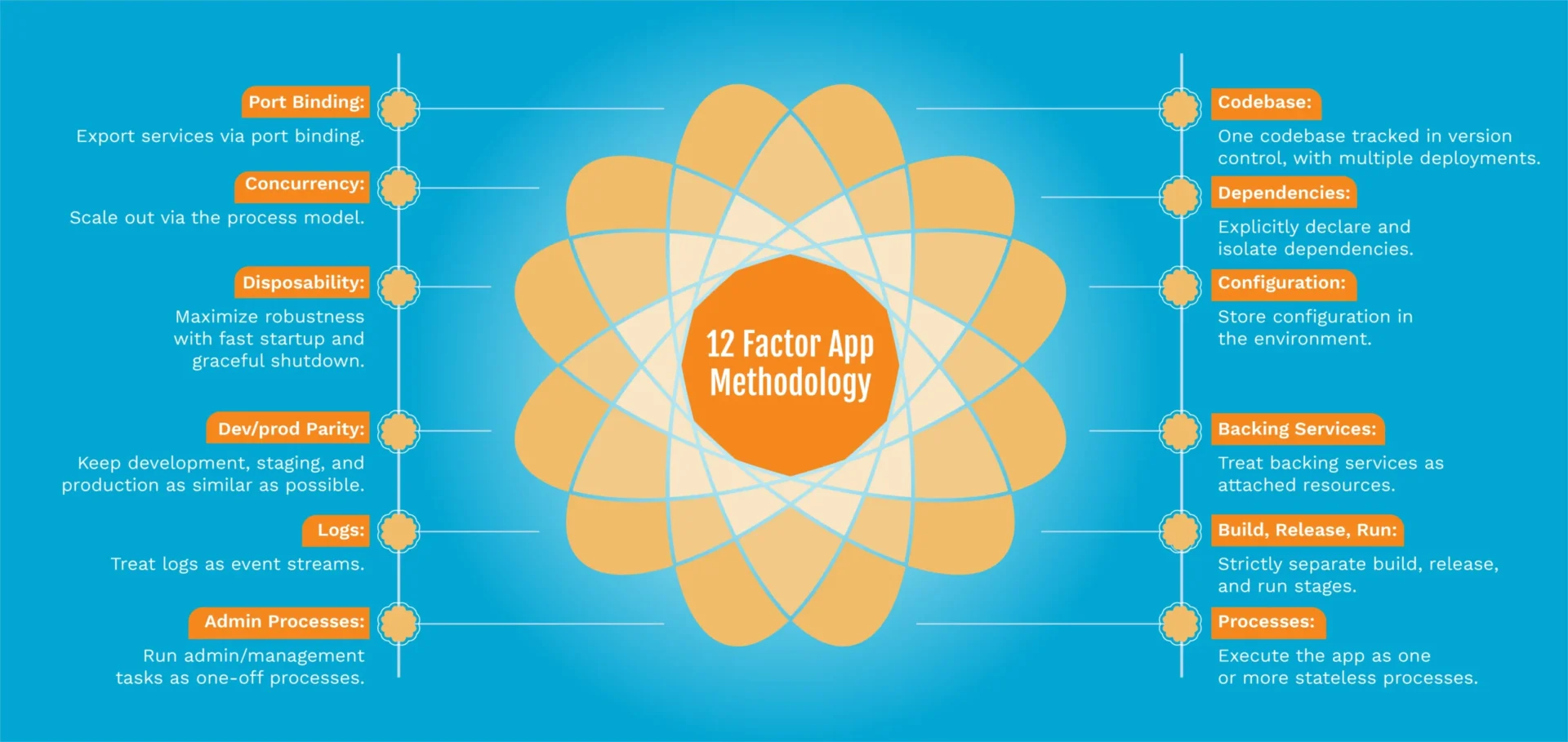The 12-Factor App methodology, originally conceptualized by Heroku, serves as a definitive guide for modern application development. It enables developers to build scalable, maintainable, and portable software systems. Let’s explore the 12 principles that define this methodology, along with their relevance across AI/ML, CI/CD pipelines, Cloud Solutions, and more.
1. Codebase: One Codebase, Tracked in Version Control
A 12-factor app strictly adheres to maintaining a single codebase per application, managed in version control like Git. It ensures clarity and prevents fragmentation, making it ideal for CI/CD and versioned deployments.
2. Dependencies: Explicitly Declare and Isolate
Dependencies should be explicitly declared in a dependency manifest (e.g., package.json or requirements.txt) and isolated within the environment. This guarantees consistency across different deployment environments and is particularly crucial for cloud and containerized solutions.
3. Config: Store Configuration in the Environment
Configuration data, such as credentials and environment-specific settings, should not be hardcoded but stored in environment variables. This approach is vital for secure and portable deployments in AI models, cloud platforms, and automated workflows.
4. Backing Services: Treat Backing Services as Attached Resources
Databases, message queues, or third-party APIs should be treated as replaceable resources. This abstraction facilitates seamless switching during migrations or scaling operations.
5. Build, Release, Run: Strictly Separate Phases
The build phase converts code into executables, the release phase combines executables with configurations, and the run phase executes the app. CI/CD pipelines rely on this structure to streamline automated builds and deployments.
6. Processes: Execute the App as One or More Stateless Processes
Applications should be stateless, with data persistence delegated to external services like databases or distributed caches. Stateless design ensures scalability and resilience, especially in cloud-native architectures and AI/ML training pipelines.
7. Port Binding: Export Services via Port Binding
Self-contained services should communicate via explicitly defined ports, enabling compatibility with microservices and containerized environments like Docker and Kubernetes.
8. Concurrency: Scale Out via the Process Model
Instead of scaling vertically, 12-factor apps advocate for horizontal scaling by running multiple instances of lightweight processes. This model is widely used in automation and cloud solutions for optimized resource utilization.
9. Disposability: Maximize Robustness with Fast Startup and Graceful Shutdown
Processes should be designed to start quickly and shut down gracefully, ensuring minimal downtime during deployments or failures. This principle is indispensable for AI-driven applications and real-time analytics.
10. Dev/Prod Parity: Keep Development, Staging, and Production as Similar as Possible
Minimizing gaps between environments reduces “it works on my machine” issues, promoting smoother deployments. Cloud-native CI/CD workflows heavily benefit from this principle.
11. Logs: Treat Logs as Event Streams
Logs should be treated as streams of events and directed to centralized logging systems for monitoring and analysis. This is particularly critical in cybersecurity and compliance scenarios where audit trails are mandatory.
12. Admin Processes: Run Admin/Management Tasks as One-Off Processes
Administrative tasks, such as database migrations or analytics jobs, should be executed in isolated, ephemeral processes. This enhances security and reliability in automation workflows.
Why 12-Factor Matters Across Multiple Domains
The 12-Factor methodology has become a cornerstone in various technological domains, including:
- AI/ML: Ensures scalability and robustness for complex training and inference workflows.
- CI/CD Pipelines: Supports streamlined automation and repeatable deployments.
- Cloud Solutions: Optimizes applications for cloud-native environments, enhancing portability and resilience.
- Automation: Promotes stateless, modular design for task automation.
- Cybersecurity: Enhances security by isolating dependencies and externalizing sensitive configurations.

